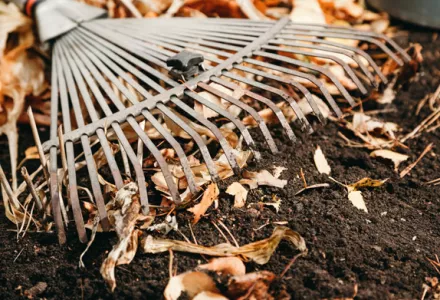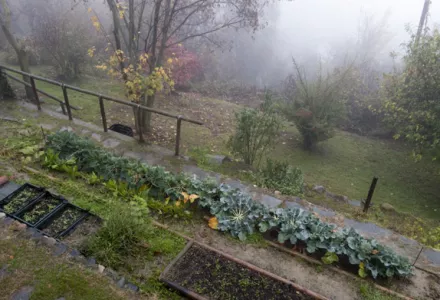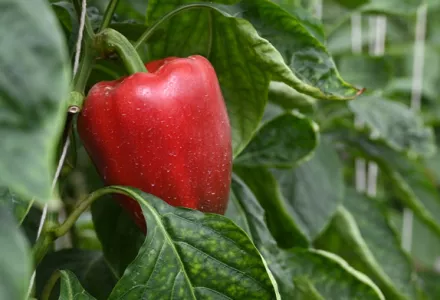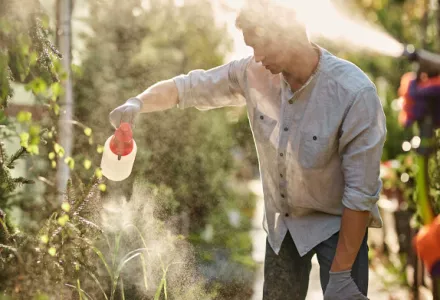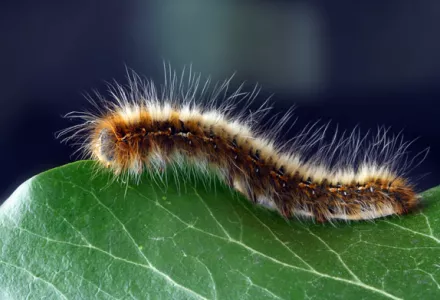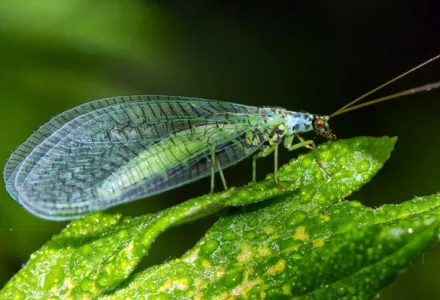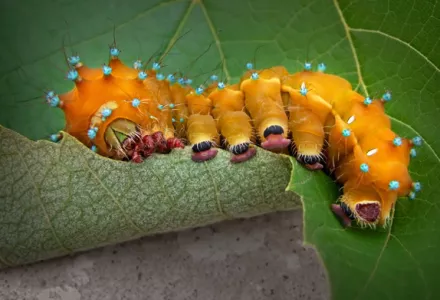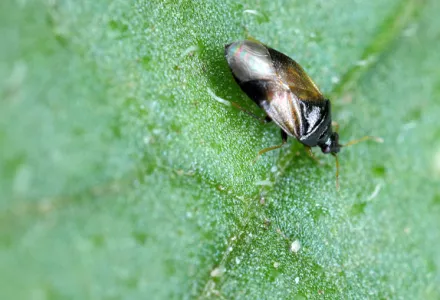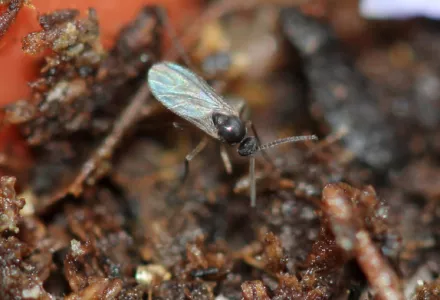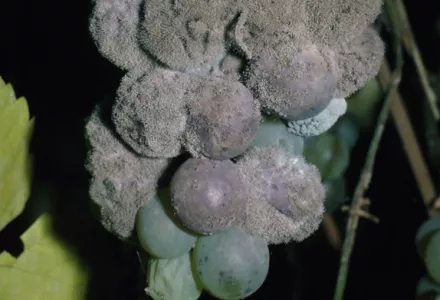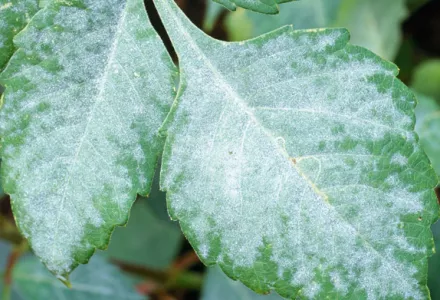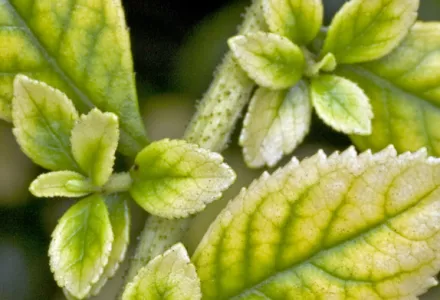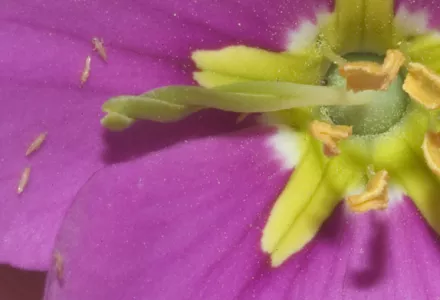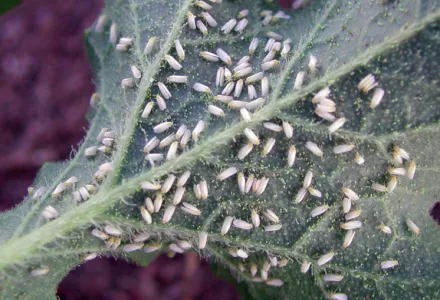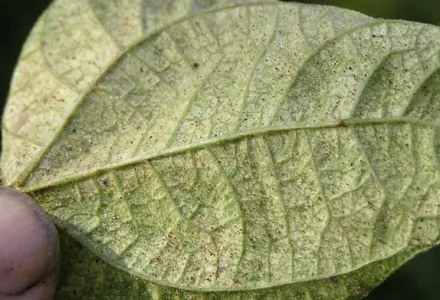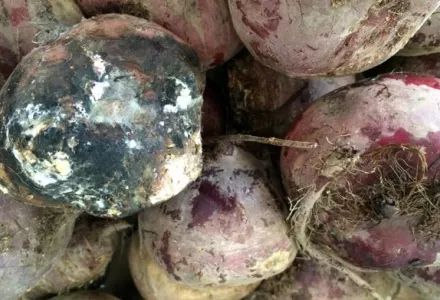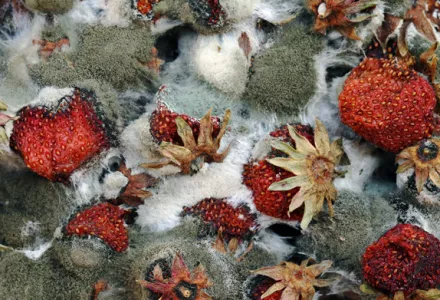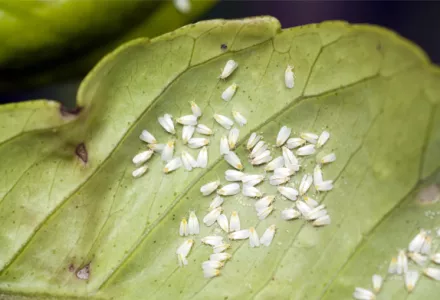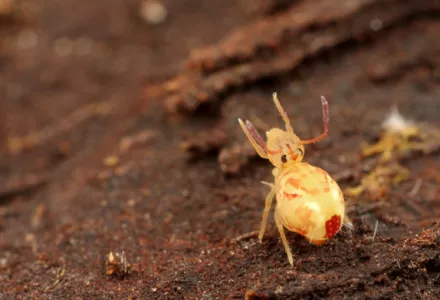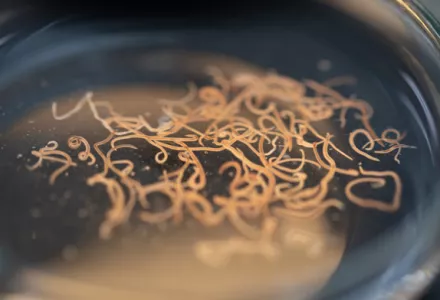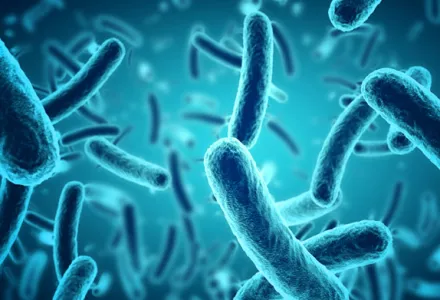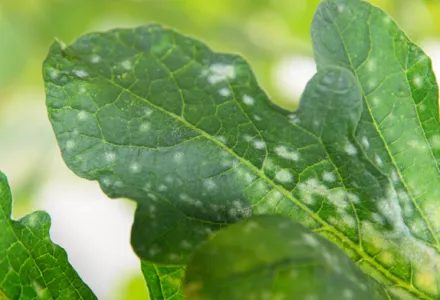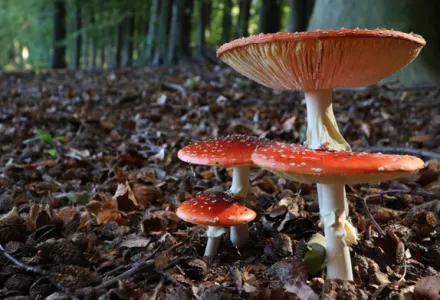Aphids are among the most destructive pests on cultivated plants in temperate regions. They are the fear of many growers, as they can cause yellowing, mottled leaves, stunted growth, curled leaves, browning, low yields and even death in plants.
When we refer to aphids, or plant lice, we usually mean a super family of insects which includes over 4,000 species of plant-specific parasites. They are not longer than about 0.16 inch, have a bulbous abdomen and can be many different colors. Many species bear a common or scientific name that indicates their favorite host plant, either for food or for raising their offspring, or to some of their distinctive characteristics. So, for example, Hyadaphis coriandri prefers coriander, the cotton aphid (Aphis gossypii) prefers cotton, the black peach aphid (Brachycaudus persicae) prefers peach and so on.
Syringe needle
All aphids are characterized by a stylus (a kind of syringe needle) that is used to pierce and suck the sap from the plant. Also, they have a couple of tubes in the back called cornicles or siphunculi through which the animals excrete a kind of honeydew called cornicle wax. For nutrition, aphids usually feed on the plant’s phloem sap, which is rich in sugars, minerals and other elements. The phloem is responsible for distributing this kind of sap throughout the plant. For water, aphids draw fluid from xylem, where raw sap runs directly from the roots. This allows them to stay hydrated during hot or dry periods.
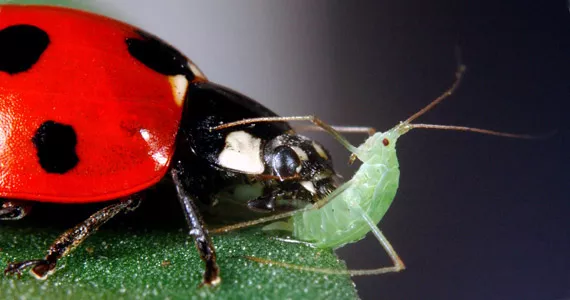
Life cycle
A generation of aphids survives the winter as eggs, which allows them to withstand extreme environmental conditions of temperature and moisture. In spring the eggs on the plant (primary host) hatch, leading to the first generation of aphids. All the aphids born from the winter eggs are females. Several more generations of female aphids are born during the spring and summer.
A female can live for 25 days, during which time she can produce up to 80 new aphids. Spring and summer reproduction occurs asexually – without males. In these cases, the resulting aphids are basically clones of the mother. In addition, the young are born live rather than as eggs. When the fall approaches, there is a generation that grow into both male and female individuals. Females fertilized by the males lay winter eggs on the plant where they are, closing the cycle.
Winged aphids
Aphids can be winged or wingless. Usually the first generation to emerge from the winter egg are wingless. However, after several generations there can be a lack of space on the host plant. This triggers the birth of a generation of winged aphids, which can migrate to other hosts.
Some species of aphid develop only on plants of a particular species. These types of aphids are called monoecius. The most common species that attack crops are heteroecious aphids. Heteroecious means that they feed on different plant species. Heteroecious aphids that reproduce sexually at least once in their lives start their cycle when the winter eggs hatch on the primary host. The primary hosts are usually annual weeds, shrubs or trees.
A couple of parthenocarpic generations (reproduced without fertilization) then give rise to a generation of winged females that migrate to the secondary host. This is usually a cultivated plant. In this new environment the aphids reproduce asexually for several generations of females until the arrival of autumn, when there is a generation of winged males and females which return to the initial host plant and lay fertilized winter eggs, closing the cycle again.
Damage caused by aphids
Direct damage
The removal of phloem sap for food weakens the plant and causes a metabolic imbalance, twisting of the leaves and, in extreme cases, leaf loss. Leaf loss affects the quantity and quality of the final harvest. They also introduce toxins into the plant, systemically altering its development.
Indirect damage
The honeydew secreted by the aphids is an ideal culture medium for various fungi which form a barrier on the leaf, stopping it from taking in all the light that hits it.
Most harmful damage
But the most harmful consequence for the crop is the transmission of viruses. Aphids can transmit dozens of viruses from a diseased plant to healthy in few seconds, especially through the winged generation. The biggest problem with viruses is that there is no remedy for them, so that the infection of a plant that is not tolerant or resistant to the virus leads inevitably to a decline in the final production.
The way to understand the degree of danger that virus transmission by aphids may represent and to choose an appropriate method of prevention is to understand the mechanisms by which these viruses are transmitted.
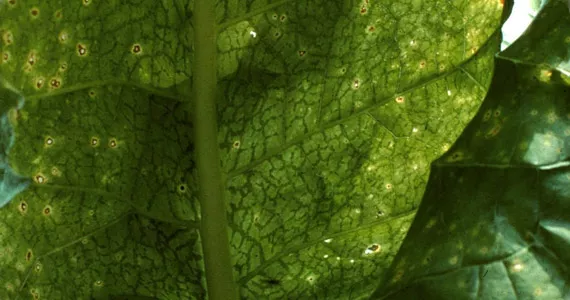
How do aphids transmit viruses?
When an aphid inserts its stylus to feed on a plant infected with a virus, some viral particles attach to the mouth parts or are ingested with the sap. This is what is called the acquisition phase and it lasts a few seconds to several days depending on the type of virus. When the aphid migrates to another healthy plant and inserts its stylus to feed, the inoculation phase begins. Depending on the mechanism of transmission, viruses are classified as non-persistent and persistent.
Non-persistent viruses
Non-persistent viruses can infect a healthy plant immediately. This type of virus transmission by aphids is the most difficult to avoid because once the aphids carrying virus have attacked the host plant, infection occurs immediately, with consequent loss of production. Fortunately, however, the number of plants that can be infected is very low. The time within which an aphid with the virus can transmit the disease to other healthy plants is called the retention period, and for non-persistent viruses the retention time is a few minutes. If the acquisition phase and retention time are longer, the virus is known as semi-persistent.
For this type of virus, the solution is to prevent access of aphids carrying the virus to the crop and prevent the aphids that feed on infected plants from dispersing.
Persistent viruses
Persistent viruses are rather different. When an aphid feeds on a plant infected with a persistent virus, a viral load enters and remains in the cells of the digestive system and is excreted through the insect’s saliva. Some viruses can replicate in the aphid body and are called a persistent-propagative virus. These persistent viruses require a period of time inside the aphid - which can range from days to months - before they can be transmitted. This period is known as latency. The retention period of these viruses – the time a virus can live without a host - also ranges from days to months.
Control mechanisms
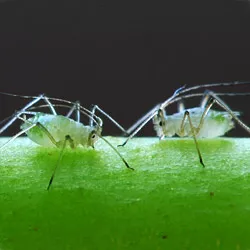
Luc Viatour / www.lucnix.be
Applying pesticide
Usually, chemical pesticides are absorbed by the leaves and transported to the tips of the leaves, the place where aphids prefer to be.
However, due to leaf deformation in infested leaves, insecticides cannot always come into contact with all the aphids because the leaves form a barrier.
To provide continuous protection, the pesticide should also be long-lasting. Systemic pesticides (chemicals that are absorbed into the system of a plant) circulate through the vascular system of the plant.
These pesticides tend to leave beneficial fauna - which do not feed on sap - unaffected.
Biological control
Biological control methods have been used successfully against parasitoids (organisms that, unlike parasites, kill their hosts in the end) and insect-eating predators and entomopathogenic fungi (fungi that can kill or seriously disable insects).
The predators of aphids include ladybird beetles (or ladybugs) and lacewings. Green lacewing larvae (Chrysoperla sp.) are voracious predators of aphids.
There are several cultivation techniques that we can use to prevent or minimize an attack of aphids. These include:
- eliminating weeds that can serve as a reservoir of eggs and adults
- using insect nets (sometimes insecticide-impregnated) to cover crops
- avoiding the excessive use of nitrogenous fertilizer
- removing crop residues
- establishing plant species that can serve as a reservoir for predators (banker plants)
How to combat winged aphids
Winged aphids are specially dangerous for your crops, as they destroy plants much faster than regular aphids. To know when winged aphids are flying over your crops, you can use sticky yellow traps in the air and place water traps on the ground. The water traps consist of a yellow plate containing two fingers of soapy water. In addition to monitoring insect numbers, they can keep a large proportion of aphids from ever reaching our crop.
Barrier crops can also be used. This method involves using plants that are not susceptible to viruses transmitted by aphids to protect the primary crop from these vectors. Its mode of action is twofold: First it forms a physical barrier, preventing the winged aphids from reaching the primary crop. Second it cleans the non-persistent virus, which carries the aphid.
When the aphid reaches the barrier plant and tests its sap, many viral particles attached to the stylus and mouth parts are detached. When the same aphid goes from the plant barrier to the primary crop it will be virus-free. In this way, the barrier crops have a cleansing effect on the non-persistent viruses that aphids can carry.

